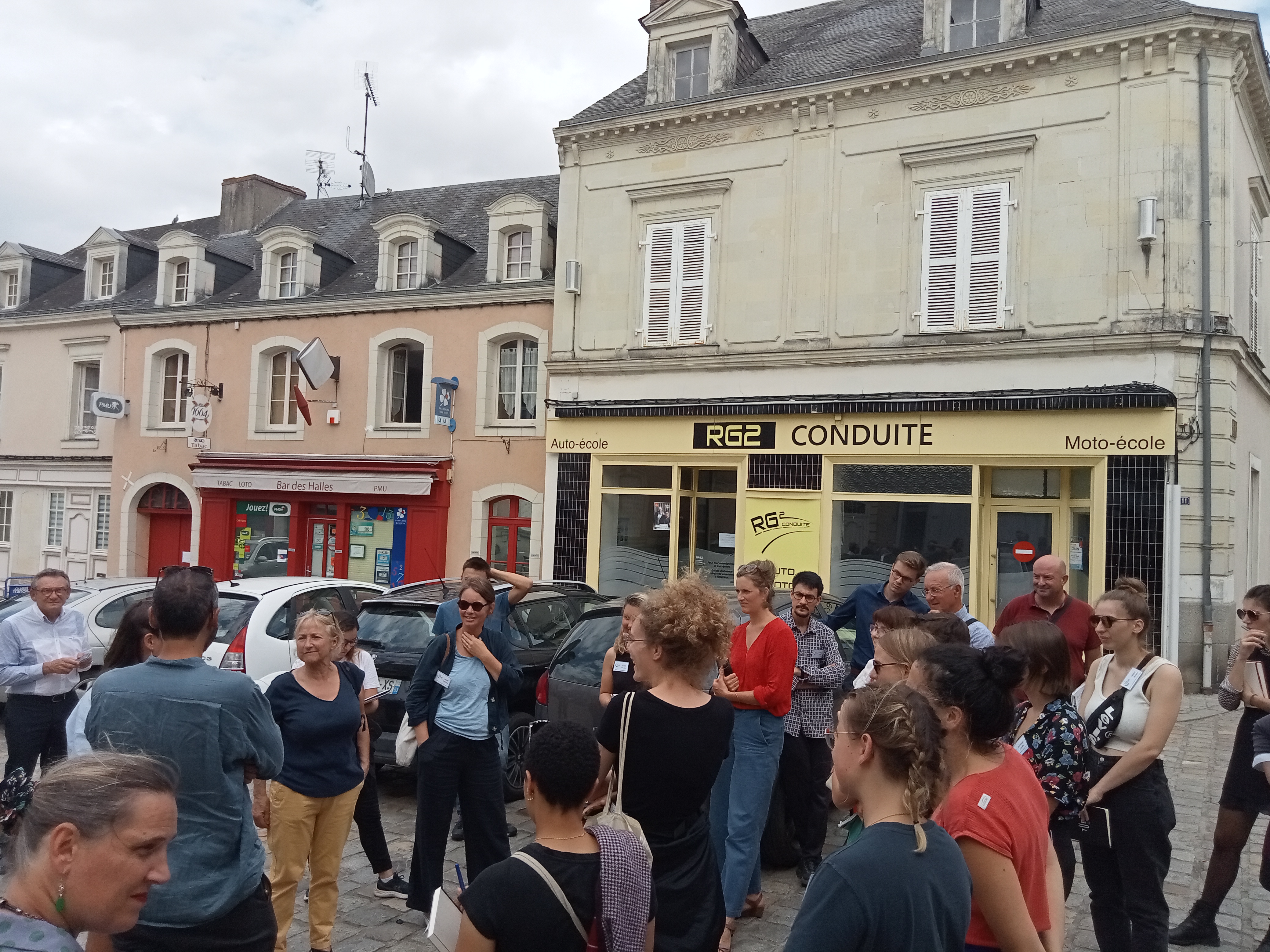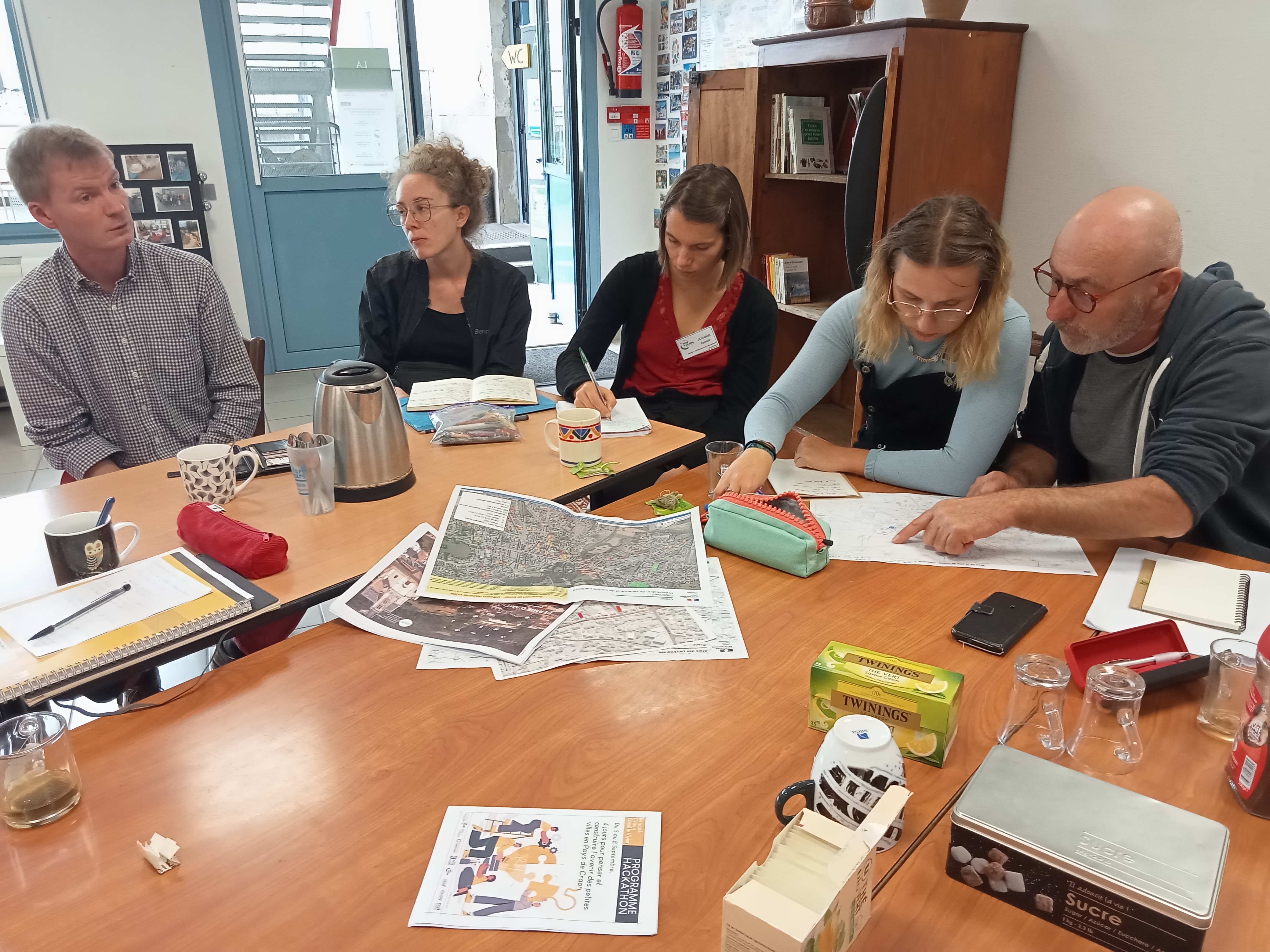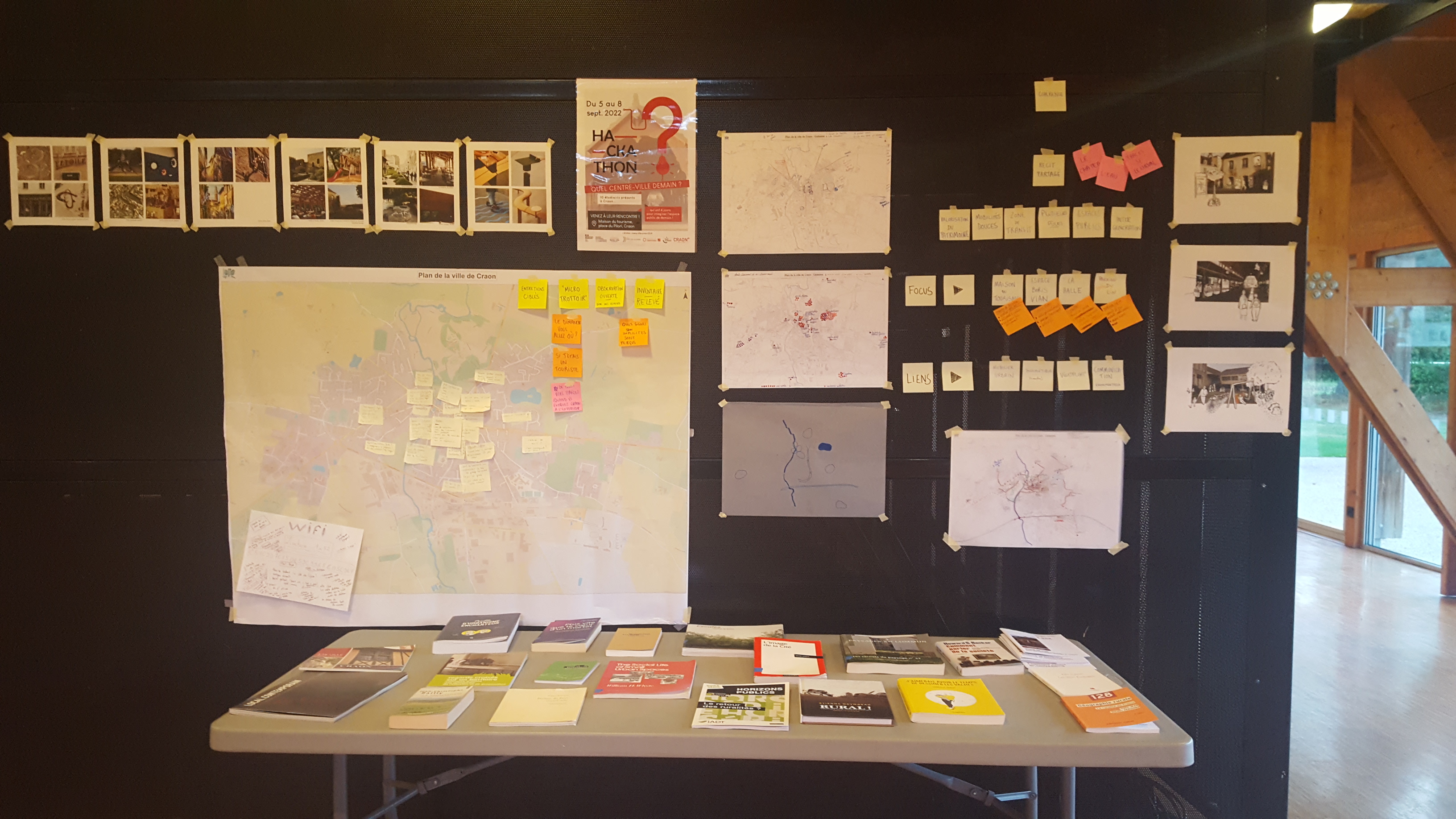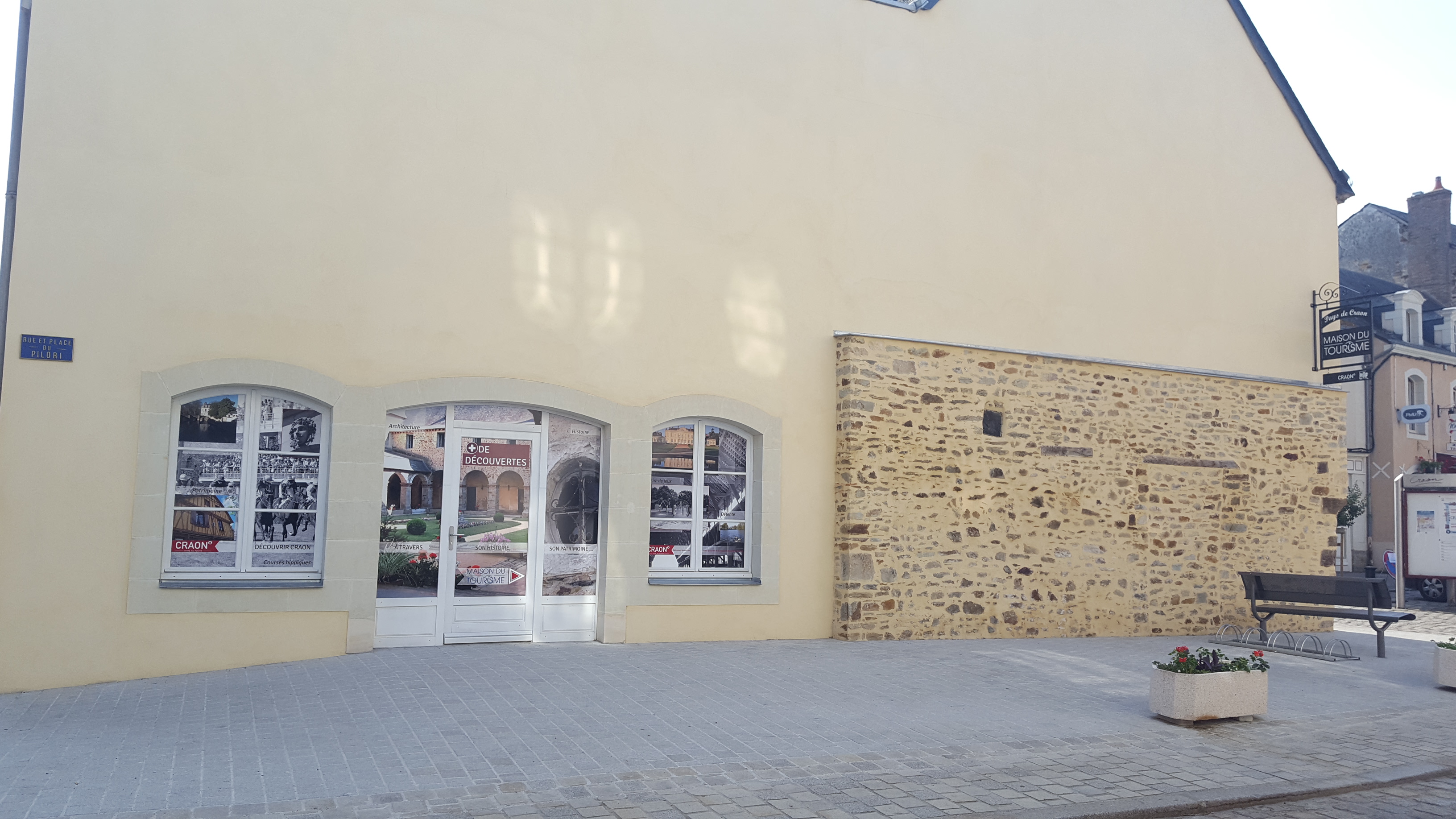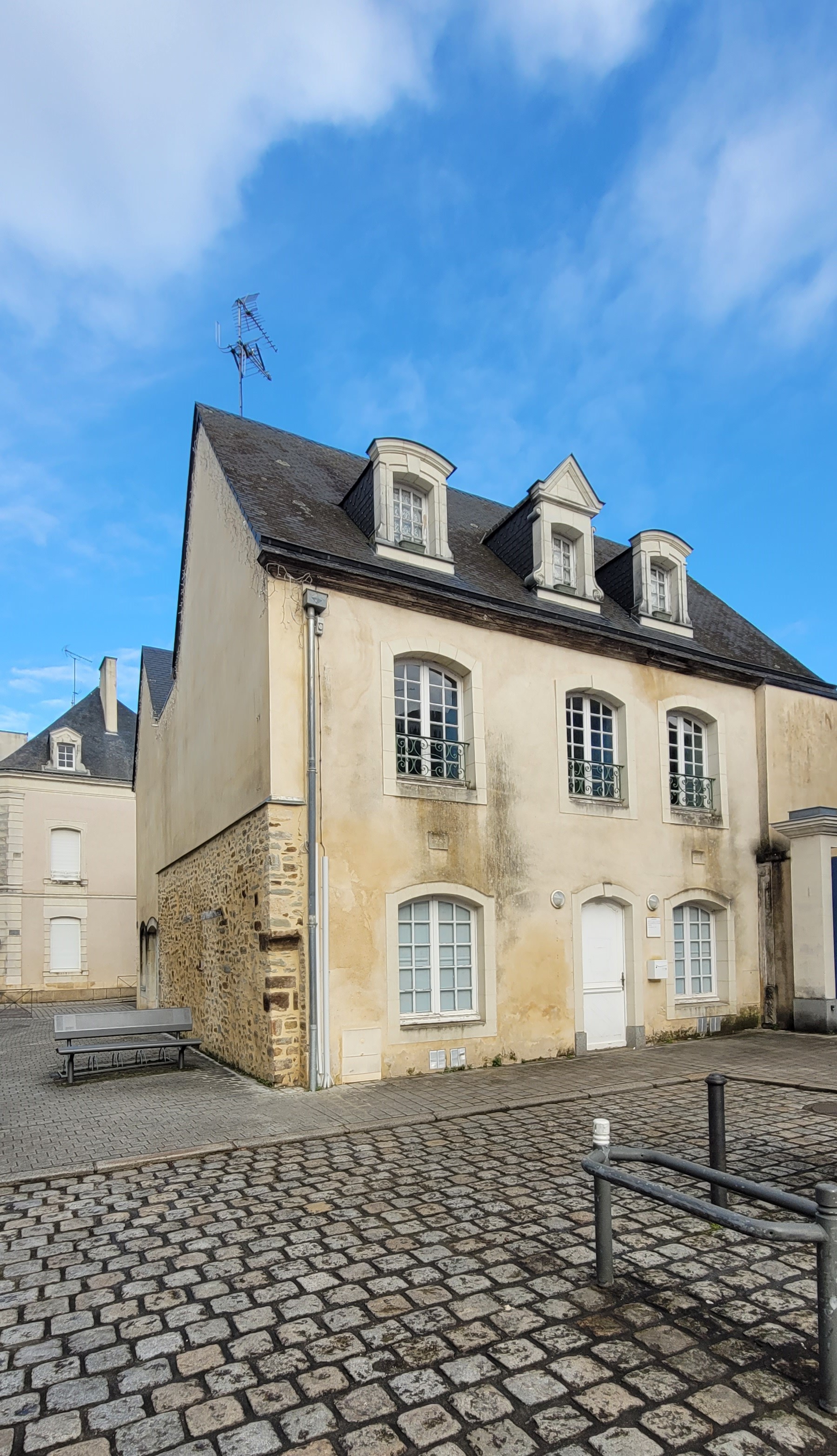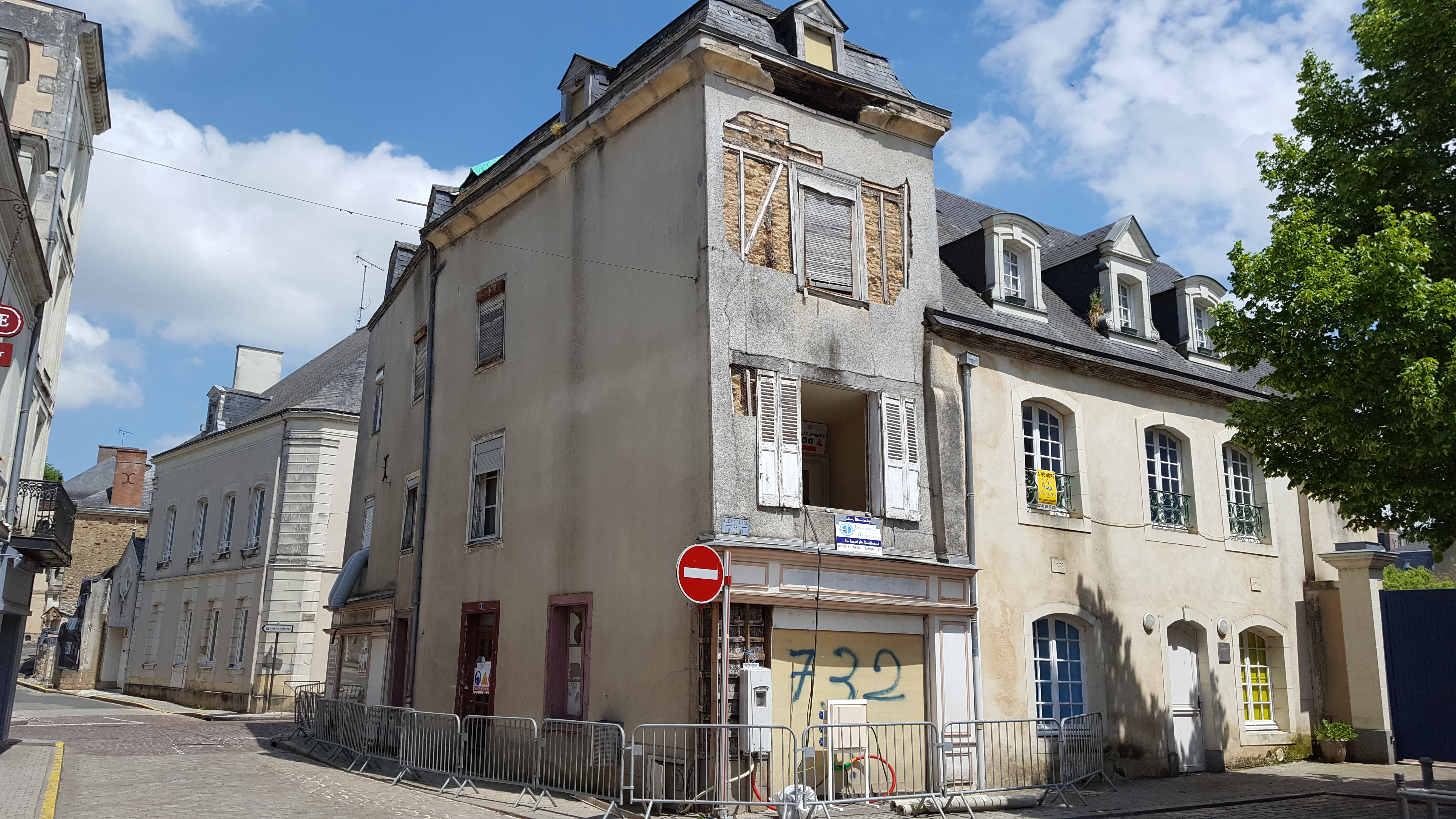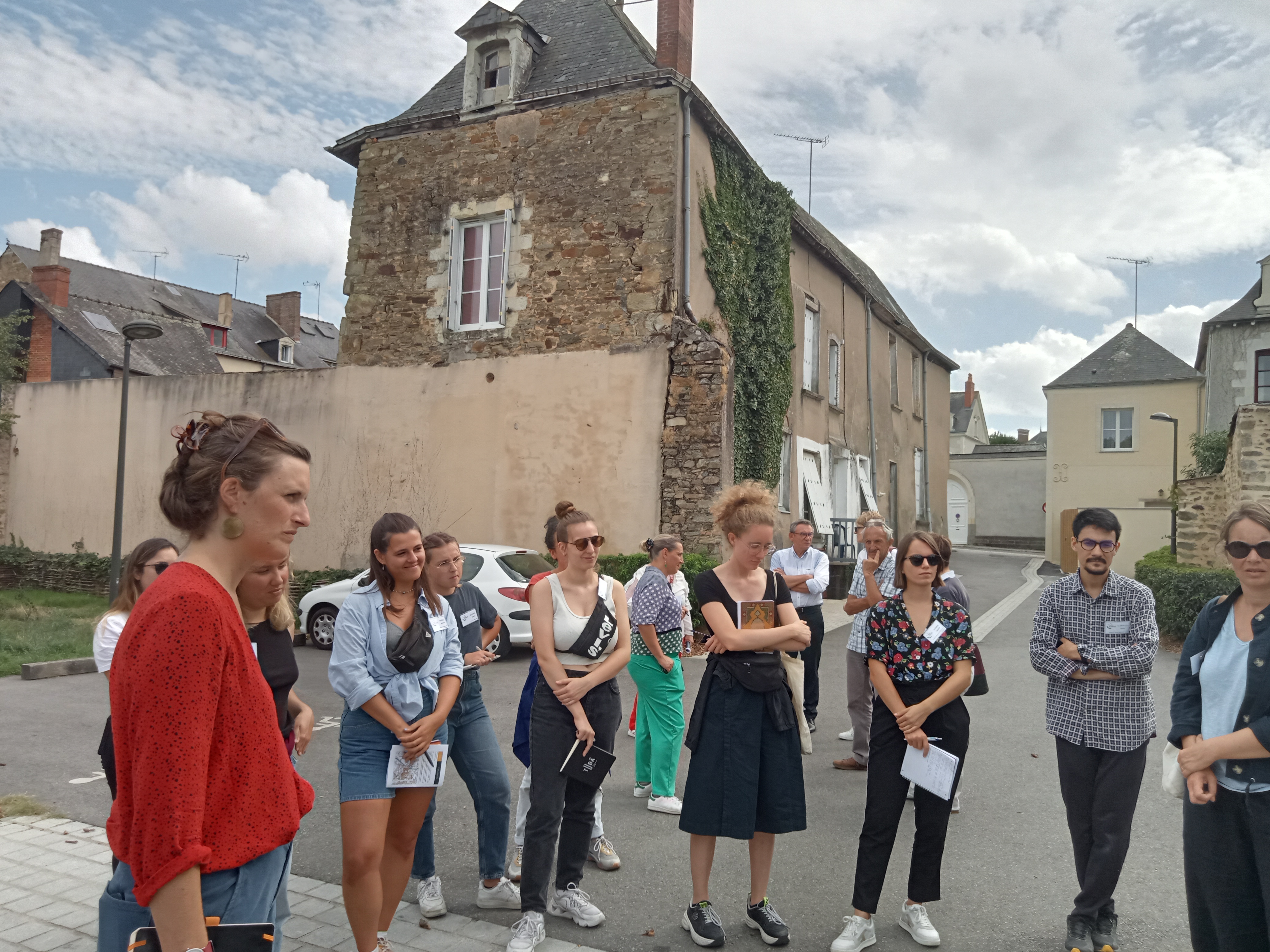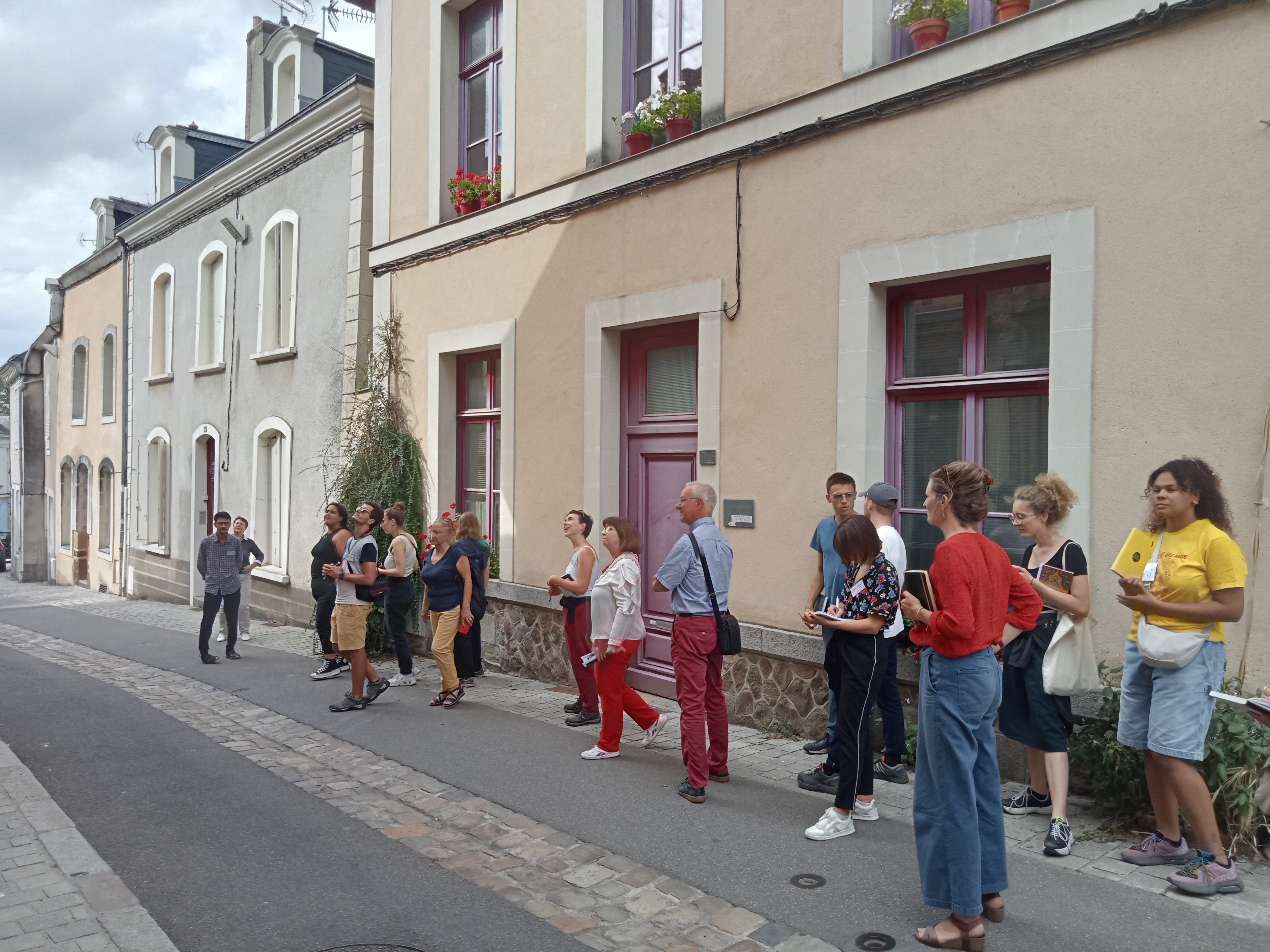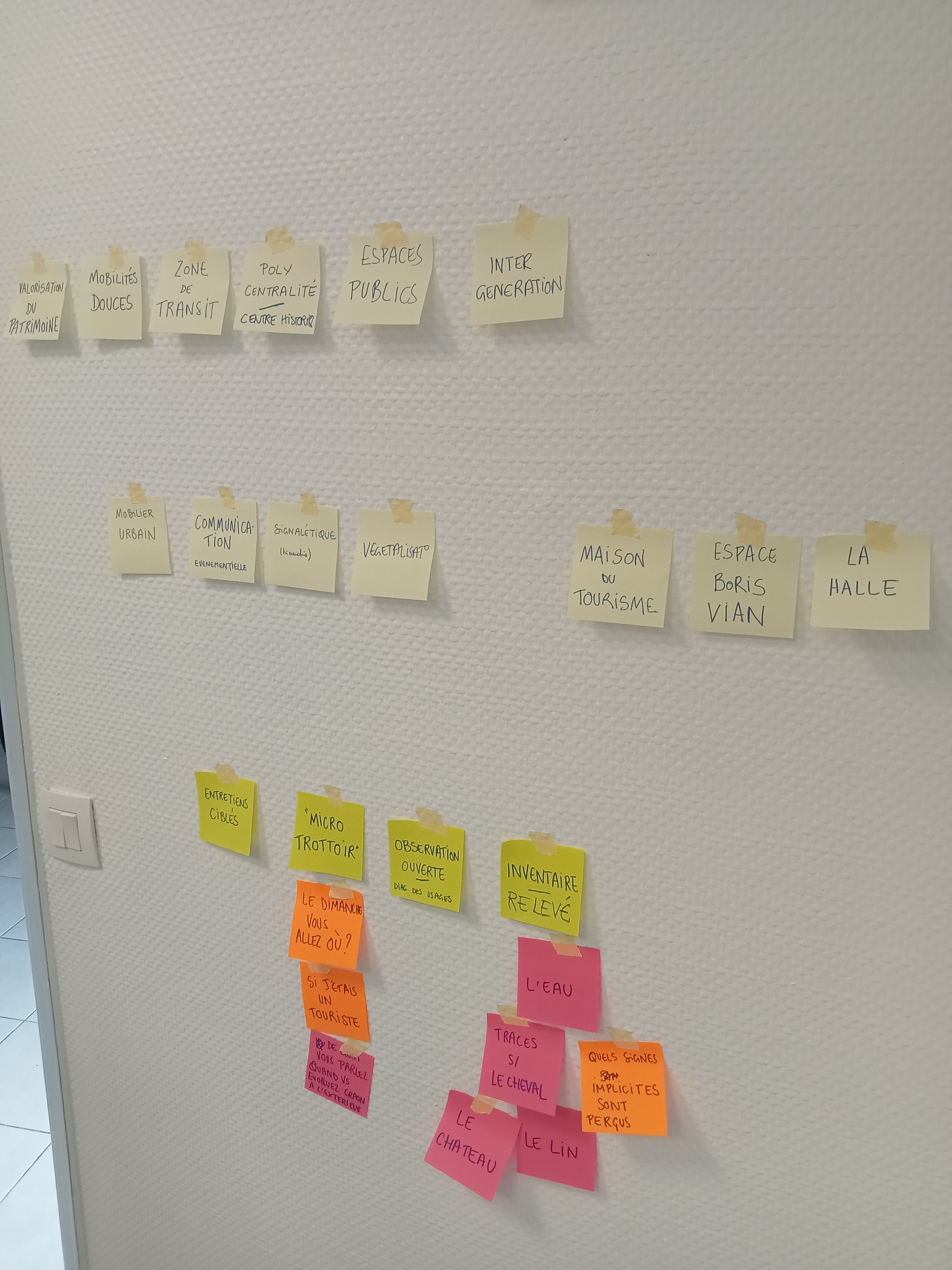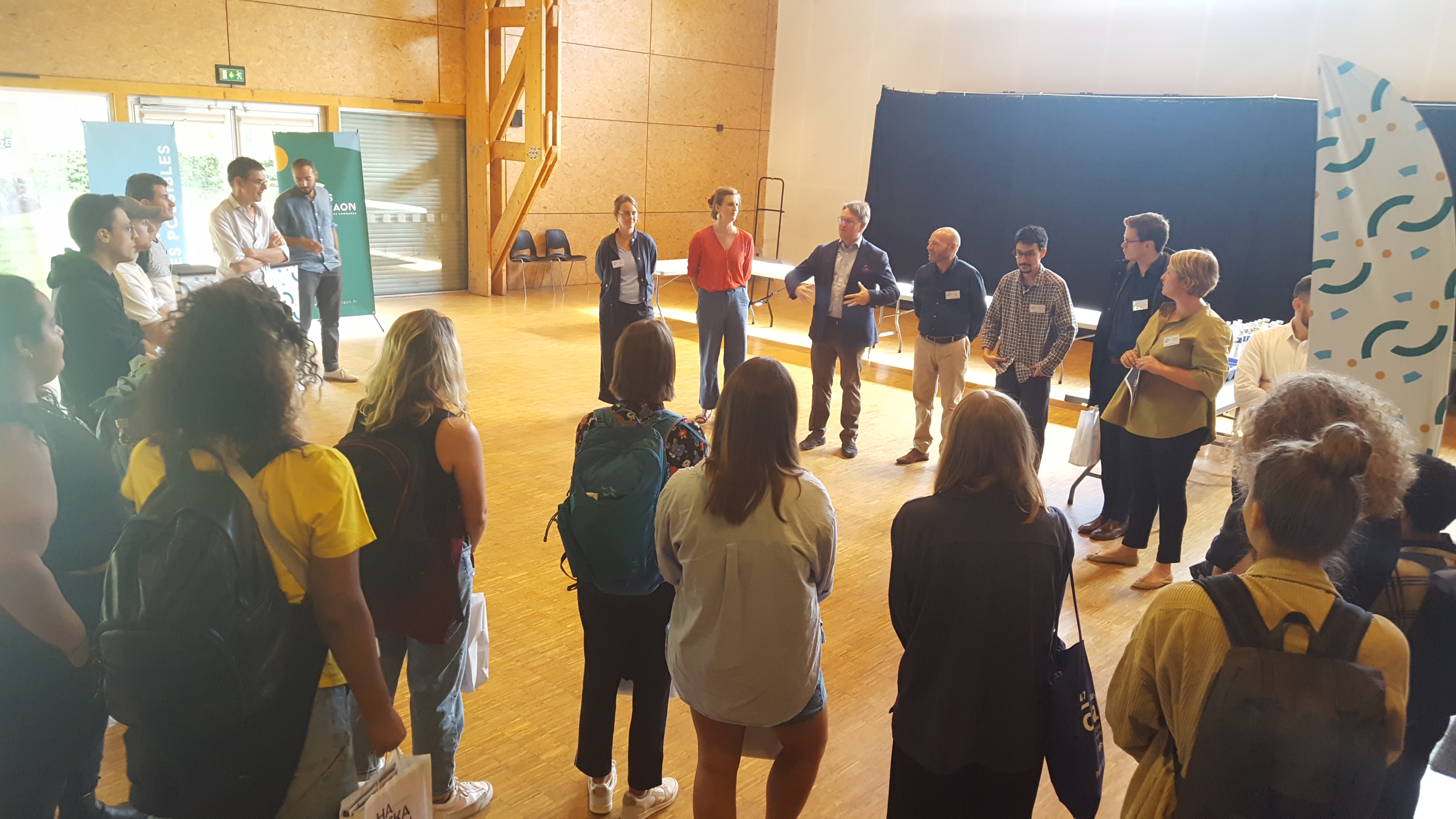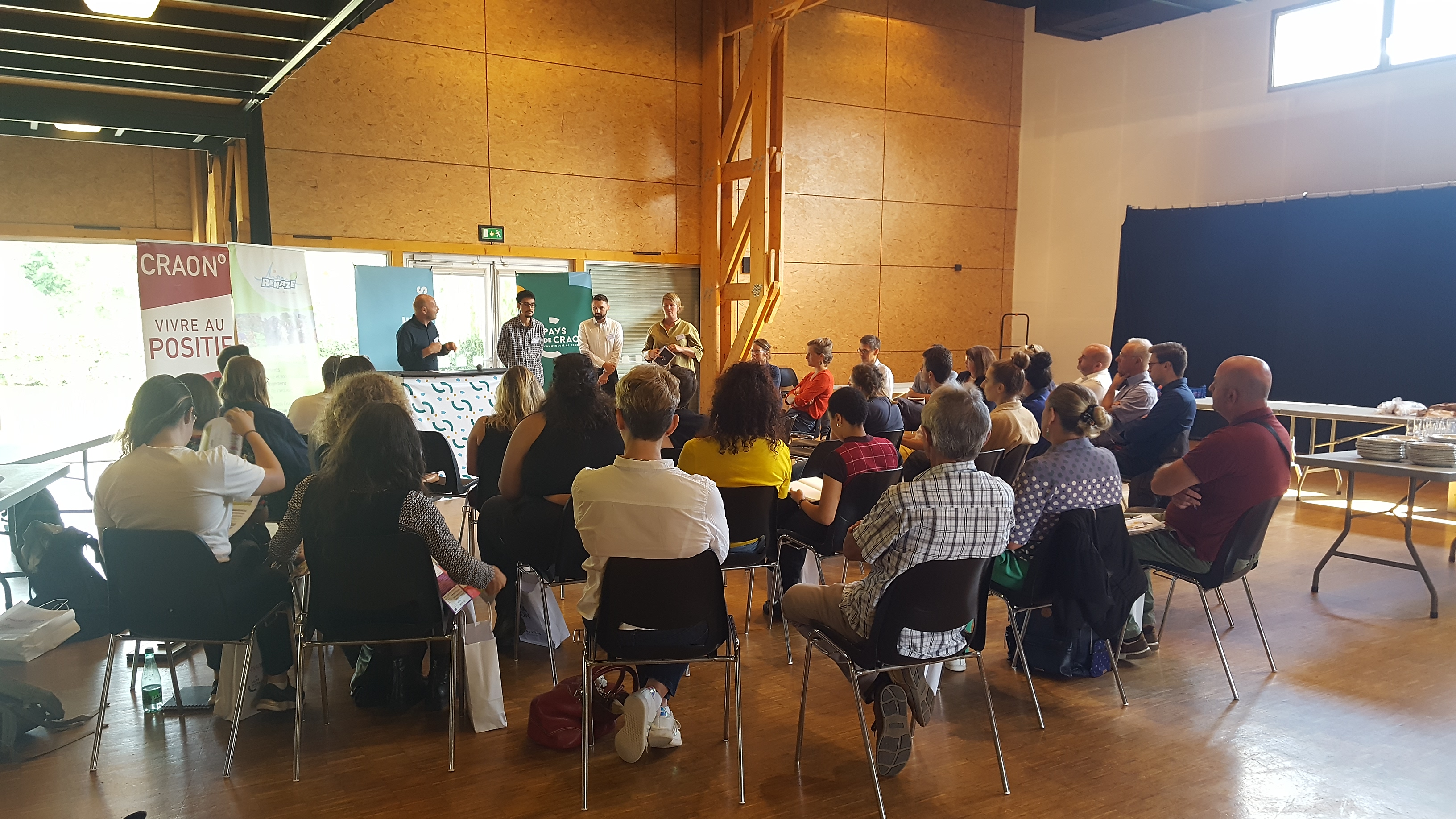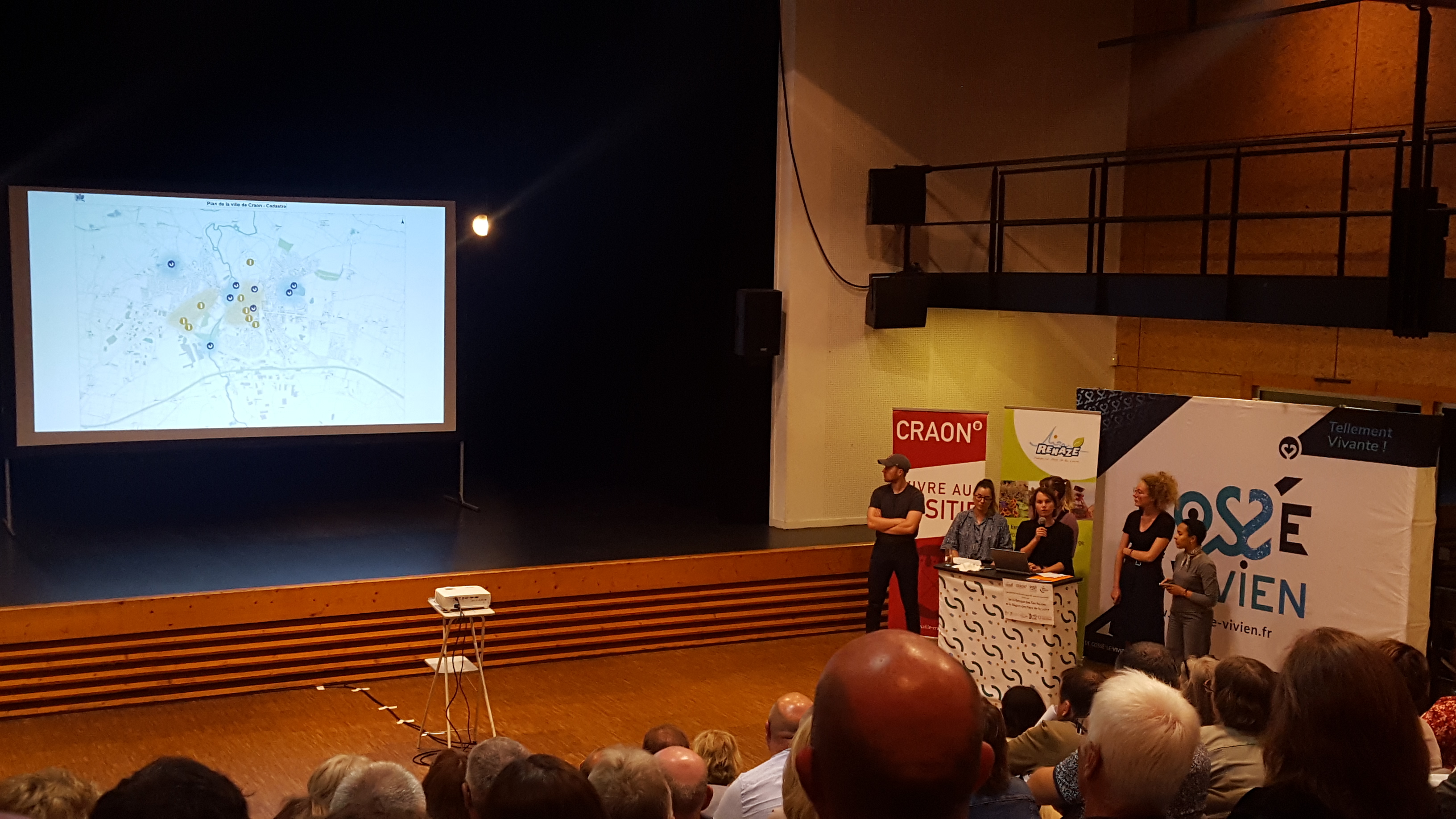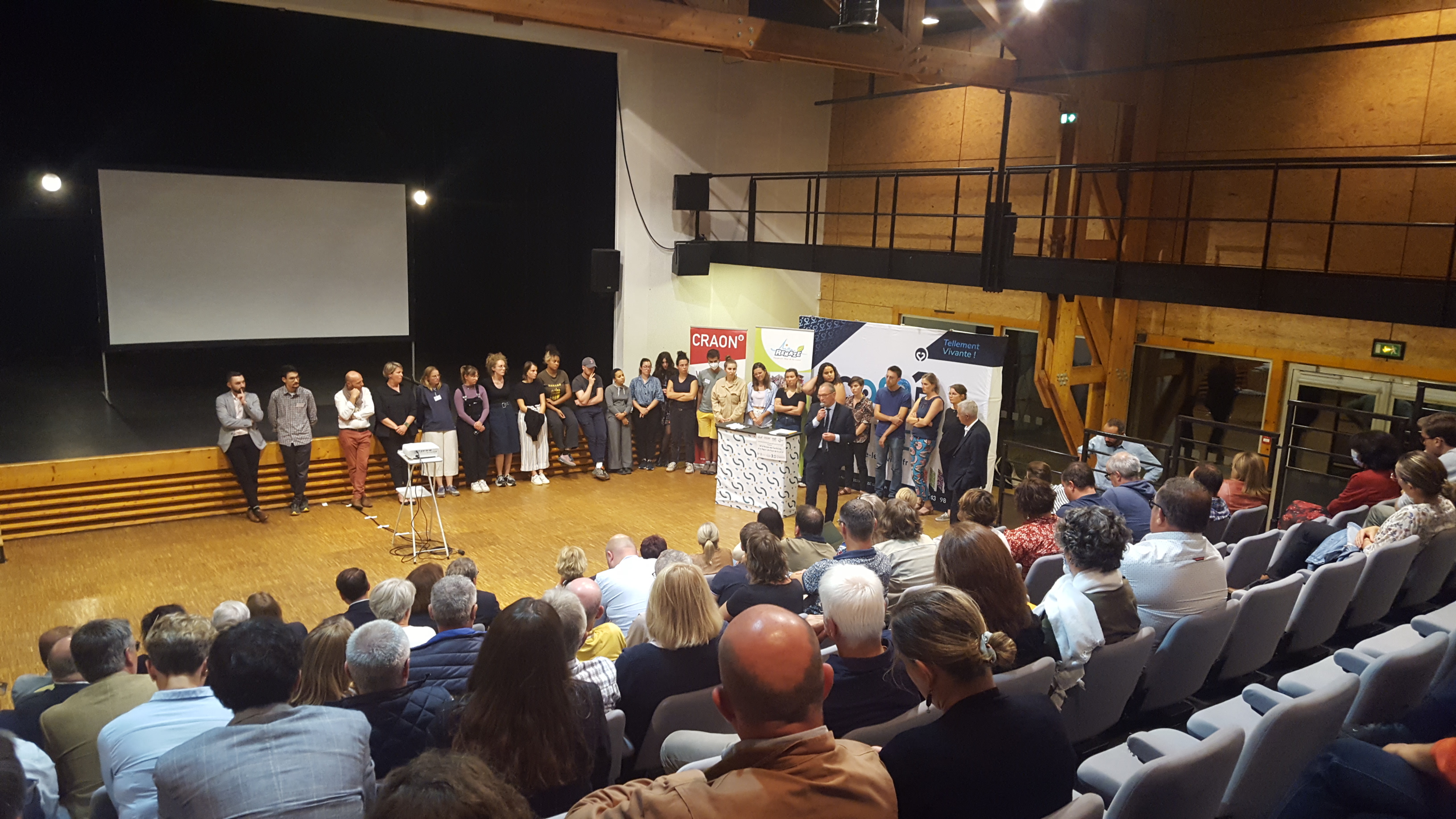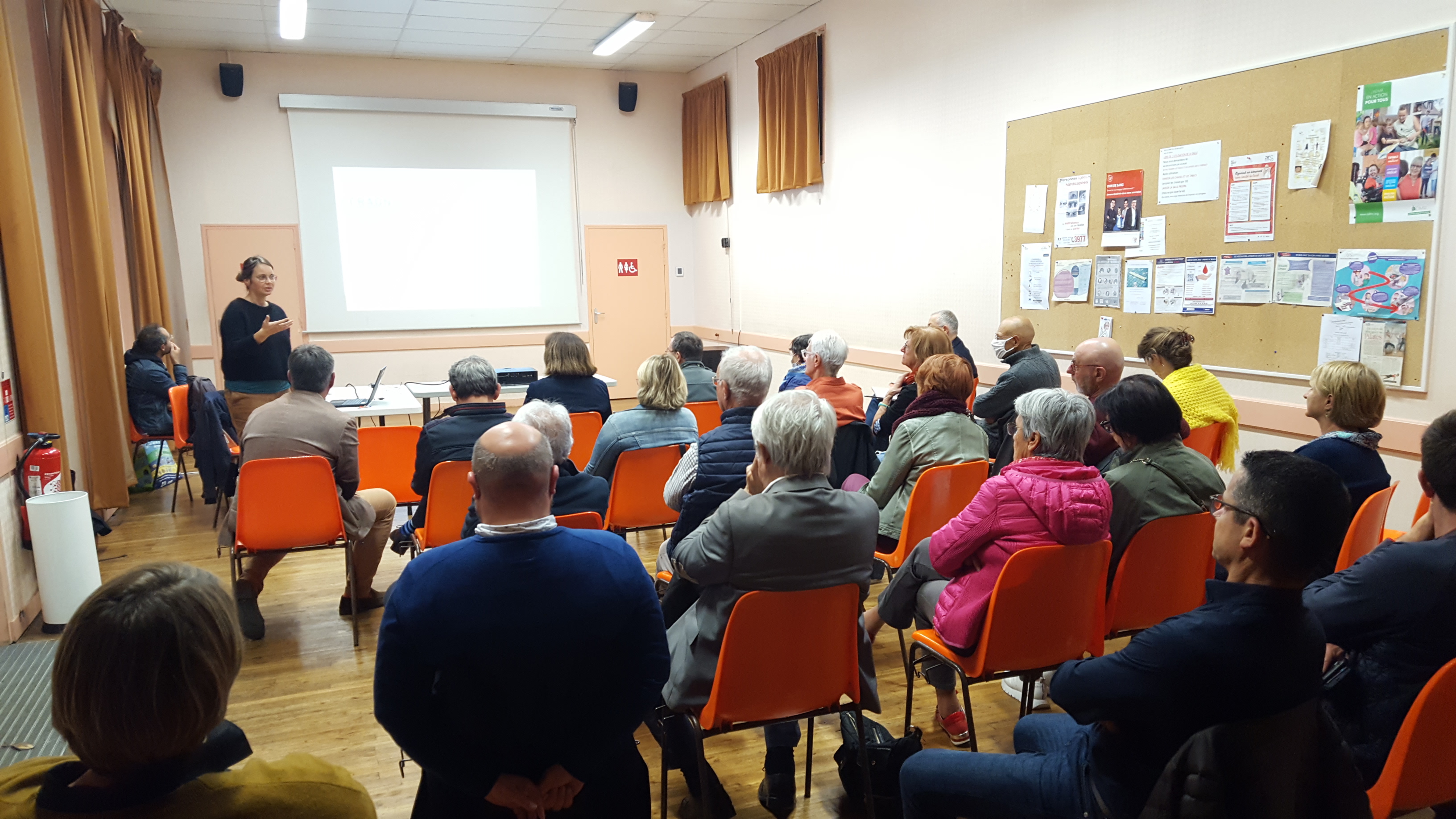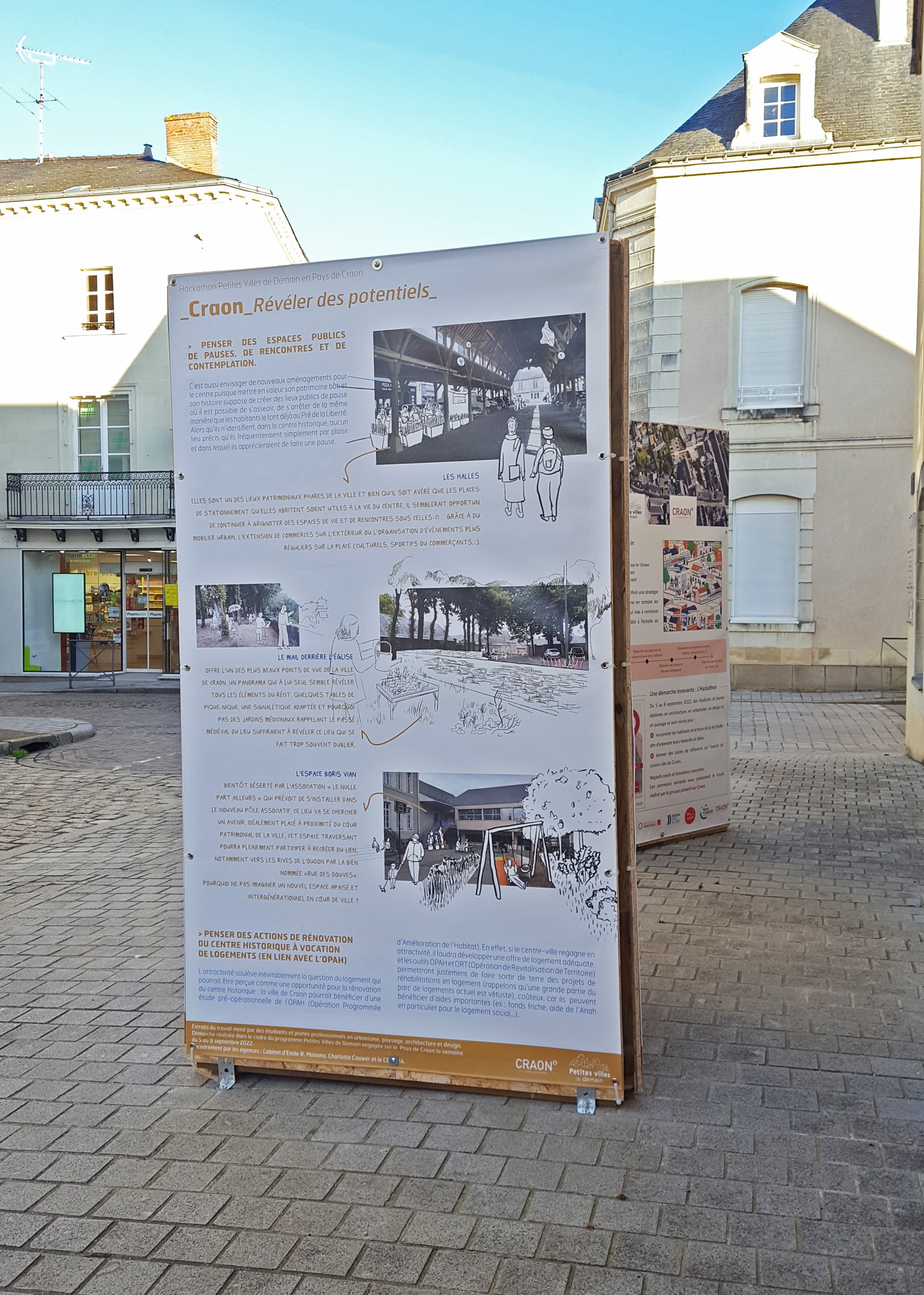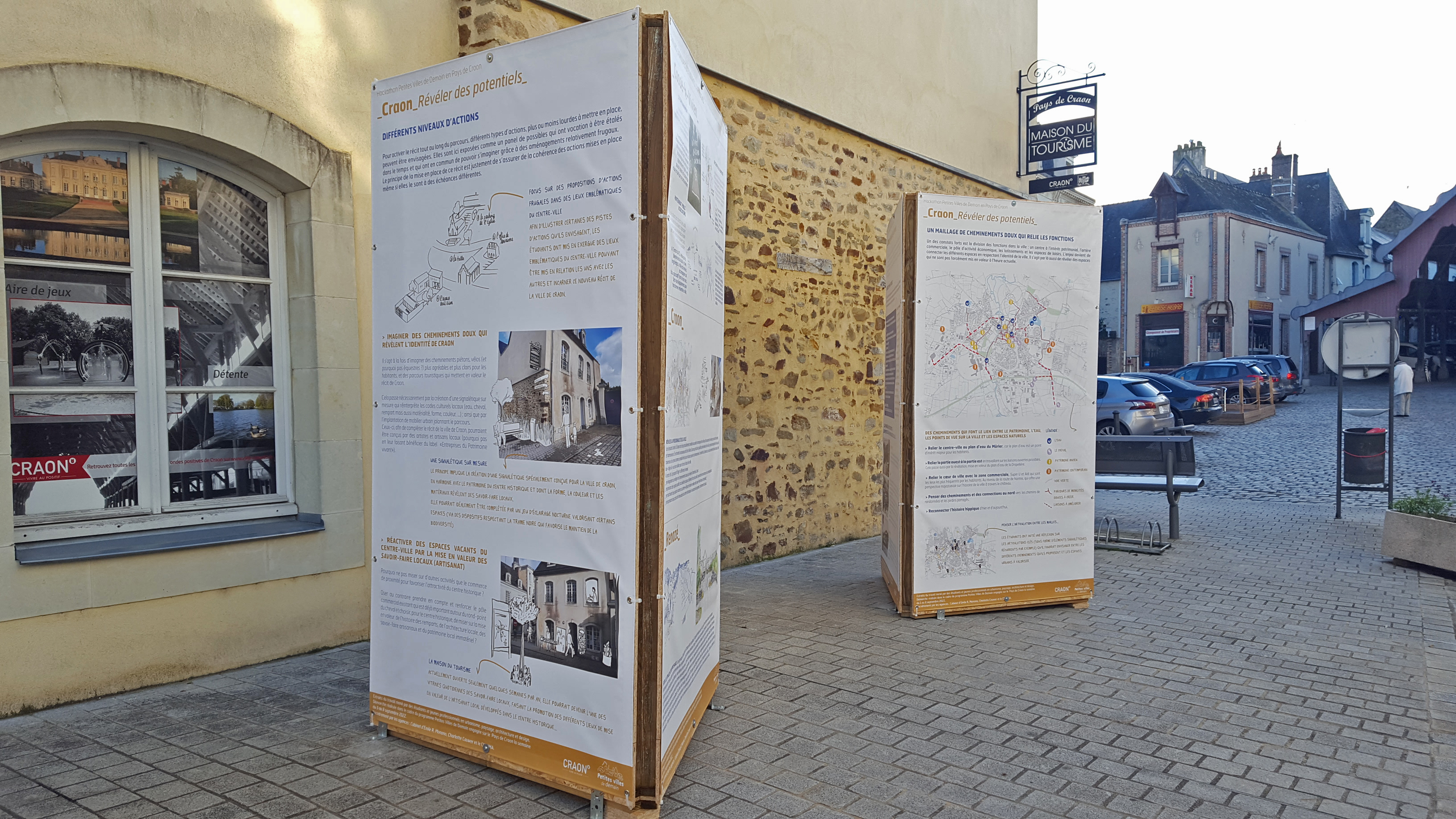Art and culture in the town centre
Renovation of an 18th-century building
Our aim: to reactivate a vacant space in the town centre by showcasing local expertise (crafts).
Why not focus on activities other than local shops to boost the appeal of the historic centre?
to boost the appeal of the historic centre?
Dare, on the contrary, to take into account and strengthen the existing
existing commercial centre by highlighting
the history of the ramparts, local architecture, craft skills and local
and intangible local heritage?
Why not focus on activities other than local shops to boost the appeal of the historic centre?
to boost the appeal of the historic centre?
Dare, on the contrary, to take into account and strengthen the existing
existing commercial centre by highlighting
the history of the ramparts, local architecture, craft skills and local
and intangible local heritage?
France
place du Pilori, 53400 Craon
Prototype level
No
Yes
Yes
No
No
53084: Craon (FR)
The creation of a temporary artist’s workshop will give professionals the opportunity to showcase their work and share it with local residents. This space will be available under a three-month lease. In the fall of 2023, the town conducted a successful first trial by hosting ceramic artist Catherine Paysan2.
The relocation of the municipal art gallery La Maison Bleue to this new site will provide better conditions and enhance its visibility. Each year, the town selects five artists who exhibit their work in this gallery for six weeks and lead workshops and discussions for residents and students3.
To expand its cultural offering, Craon will also integrate a Micro-Folie (digital museum) into these premises4. This project will be carried out in collaboration with the towns of Cossé-le-Vivien and Renazé, which will establish similar facilities in their areas. A cultural mediator will be responsible for welcoming visitors on each site.
In this place, the 28,000 residents of the region will have the opportunity to explore modern art, access masterpieces from national museums, and even engage in artistic practice. The constant renewal of exhibitions will ensure a diverse cultural offering, maintaining long-term interest for visitors. This initiative represents a unique opportunity for a rural town to create such a dynamic cultural hub in the heart of its historic center.
The upper floor will be used to host artists-in-residence on an occasional basis, as well as to accommodate apprentices. Although Craon is home to 50% of the industrial activity in its region, it struggles to provide housing for young professionals. In case of emergency, one of the housing units may also be used for urgent relocations. For example, the city has experienced several floods in the past two years.
The relocation of the municipal art gallery La Maison Bleue to this new site will provide better conditions and enhance its visibility. Each year, the town selects five artists who exhibit their work in this gallery for six weeks and lead workshops and discussions for residents and students3.
To expand its cultural offering, Craon will also integrate a Micro-Folie (digital museum) into these premises4. This project will be carried out in collaboration with the towns of Cossé-le-Vivien and Renazé, which will establish similar facilities in their areas. A cultural mediator will be responsible for welcoming visitors on each site.
In this place, the 28,000 residents of the region will have the opportunity to explore modern art, access masterpieces from national museums, and even engage in artistic practice. The constant renewal of exhibitions will ensure a diverse cultural offering, maintaining long-term interest for visitors. This initiative represents a unique opportunity for a rural town to create such a dynamic cultural hub in the heart of its historic center.
The upper floor will be used to host artists-in-residence on an occasional basis, as well as to accommodate apprentices. Although Craon is home to 50% of the industrial activity in its region, it struggles to provide housing for young professionals. In case of emergency, one of the housing units may also be used for urgent relocations. For example, the city has experienced several floods in the past two years.
Crafts
Culture
Meeting Place
Multigenerational
Openness to the world
The project places a strong emphasis on improving the building’s energy efficiency, with the goal of achieving a B rating (72 kWhEP/m²/year and only 2 kgCO₂e/m²/year emissions), through:
• Improved thermal insulation, • Replacement of exterior joinery, • Installation of a heat pump heating system and a double-flow ventilation system, • Use of environmentally friendly materials.
State services have reached out to the town to make Maison du Pilori a pilot site for material reuse. To date, no other municipality in Mayenne has implemented a structured and professionally measured initiative in this field. APEES 53 will support the town in integrating material reuse and recovery from deconstruction into the project.
• Improved thermal insulation, • Replacement of exterior joinery, • Installation of a heat pump heating system and a double-flow ventilation system, • Use of environmentally friendly materials.
State services have reached out to the town to make Maison du Pilori a pilot site for material reuse. To date, no other municipality in Mayenne has implemented a structured and professionally measured initiative in this field. APEES 53 will support the town in integrating material reuse and recovery from deconstruction into the project.
Preserving Heritage
The project aims to restore the 18th-century building while assigning it new functions. Its external structure will be preserved, with facade and roof restoration, as well as improved thermal insulation. By maintaining its traditional architecture while adapting it to modern uses, the project contributes to preserving the town’s architectural identity.
The characteristic 18th-century elements will be renovated or replaced according to best practices (railings, woodwork, cornices). Any integration of modern elements will be carried out in consultation with Bâtiments de France. For example, the heat pump will be discreetly installed under the roof.
Promoting Culture and Tourism
The ground floor will be transformed into a cultural and artisanal hub, featuring:
• A 50 m² art gallery to showcase the creations of local artisans • A 20 m² artist’s workshop, hosting residencies and creative sessions • A 50 m² Micro-Folie digital museum, providing digital access to national art collections
The building’s location and its rehabilitation program will make it a new cultural hub in the town, enhancing the existing range of activities at both the local and regional levels. Town officials and technical staff have visited several similar sites to exchange insights—both successes and fails—to confirm the relevance of this project (such as in Châteaubriant, Loire-Atlantique, and Sablé-sur-Sarthe, Sarthe).
As of now, the only Micro-Folie in Mayenne is in Laval, highlighting a clear need for such a facility in the region.
The project aims to restore the 18th-century building while assigning it new functions. Its external structure will be preserved, with facade and roof restoration, as well as improved thermal insulation. By maintaining its traditional architecture while adapting it to modern uses, the project contributes to preserving the town’s architectural identity.
The characteristic 18th-century elements will be renovated or replaced according to best practices (railings, woodwork, cornices). Any integration of modern elements will be carried out in consultation with Bâtiments de France. For example, the heat pump will be discreetly installed under the roof.
Promoting Culture and Tourism
The ground floor will be transformed into a cultural and artisanal hub, featuring:
• A 50 m² art gallery to showcase the creations of local artisans • A 20 m² artist’s workshop, hosting residencies and creative sessions • A 50 m² Micro-Folie digital museum, providing digital access to national art collections
The building’s location and its rehabilitation program will make it a new cultural hub in the town, enhancing the existing range of activities at both the local and regional levels. Town officials and technical staff have visited several similar sites to exchange insights—both successes and fails—to confirm the relevance of this project (such as in Châteaubriant, Loire-Atlantique, and Sablé-sur-Sarthe, Sarthe).
As of now, the only Micro-Folie in Mayenne is in Laval, highlighting a clear need for such a facility in the region.
The ephemeral artist's studio will be made available to the artisans for a moderate rent, enabling them to share their passion, give them visibility and validate their economic viability in order to set up permanent premises.
Both the art gallery and the digital museum are completely free of charge, to facilitate access to culture for schoolchildren, families and senior citizens.
The art gallery is run by a group of volunteers. The local authority provides support for communication and the logistics of welcoming artists.
Last but not least, the site has been designed to make it easier for people with disabilities to visit (see attachment).
Both the art gallery and the digital museum are completely free of charge, to facilitate access to culture for schoolchildren, families and senior citizens.
The art gallery is run by a group of volunteers. The local authority provides support for communication and the logistics of welcoming artists.
Last but not least, the site has been designed to make it easier for people with disabilities to visit (see attachment).
Residents were consulted at the Hackaton event. The public's expectations were confirmed by the test with the ceramic craftsman. Volunteers from the art gallery were able to visit the site and validate the development project. For example, they chose to double up the wooden walls to make it easier to hang the works of art.
Finally, the municipality is responding to the expectations of civil society by including accommodation for apprentices and emergency housing in the project.
Finally, the municipality is responding to the expectations of civil society by including accommodation for apprentices and emergency housing in the project.
Following the Hackaton, the town of Craon's culture and communications committee took up the project. Over the course of a year, it met with the various players involved in the project (artists, businesses, the intercommunal social action centre) to ascertain whether it was worth investing in. The project is valued at €660,000.
The idea was born within the collective of young urban planners and designers.
An architect's assignment was then used to draw up the first sketches, enabling future users to be involved. Finally, the architect's assignment involved an energy study, the main users (the art gallery) and the materials recycling network.
An architect's assignment was then used to draw up the first sketches, enabling future users to be involved. Finally, the architect's assignment involved an energy study, the main users (the art gallery) and the materials recycling network.
The innovation is to allow several art forms to coexist on the same site in a small rural village. The particularity is also to open up access by building on existing initiatives (the art gallery) and combining them with new forms of access to culture (artists' workshops with mediation activities, access to major national collections with the digital museum).
Finally, despite the fact that access is free, the project is intended to be financially reasonable in the long term. A cultural mediator will be recruited and shared with two other local authorities. The group of volunteers has also confirmed its desire to get involved in the new project.
The project is not complicated in itself. If it started with a bit of madness, it was built with a reproducible methodology. The digital museum is an initiative of the French Ministry of Culture and compatible with simple digital tools. We are fortunate on the site to offer 3 perspectives on art (current art, "great art", shaping art) in a space that remains limited. The recruitment of the cultural mediator with two other municipalities shows us that the project can be replicated in other rural municipalities, at least on the concept of an artistic space open and accessible to all.
The goal is access and awareness of culture. We are convinced that offering beauty to citizens allows us to open a different perspective on our society. Promoting a collective of volunteer citizens also makes it possible to shine differently from traditional public action. Finally, the housing offer allows us to facilitate the integration and professional launch of new generations.
The site will be a lively place, with regular rotations on the art gallery (6 per year), the ephemeral workshop (4 per year) and the apprentice accommodation (lease for a maximum duration of one year). the site aims to be open to as many people as possible, both for users and occupants.
The action to dismantle the current facilities (for reuse) begins in March 2025 and the site will be open on September 1, 2026
The action to dismantle the current facilities (for reuse) begins in March 2025 and the site will be open on September 1, 2026

